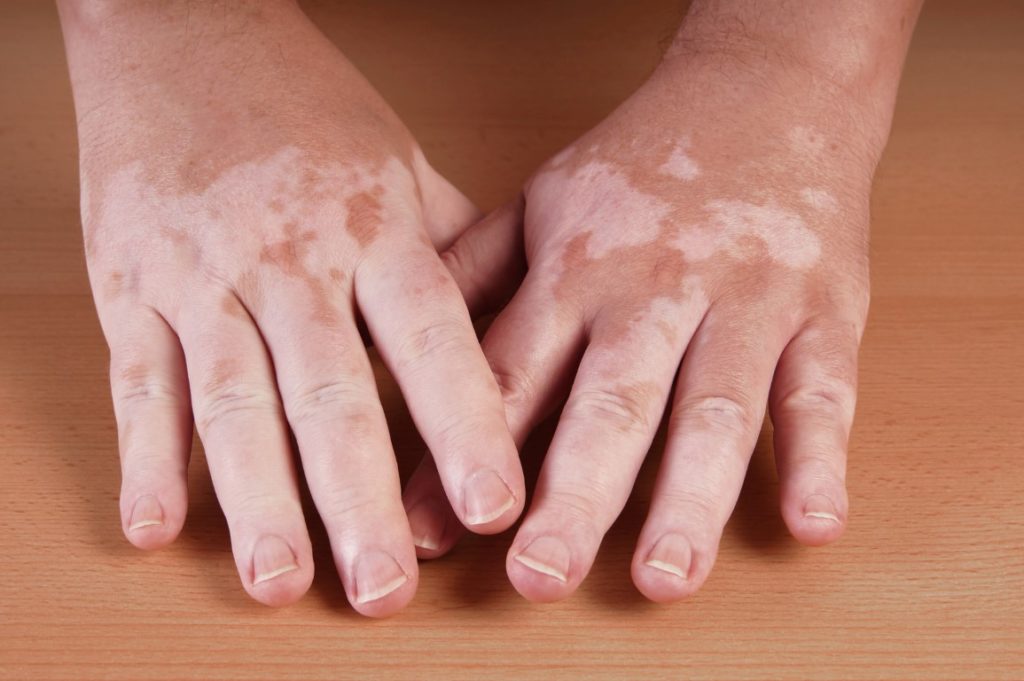Vitiligo is a skin disorder characterized by smooth, white patches on various parts of the body, caused by the loss of natural pigment. The hair from the skin may also become white.
The exact cause of the destruction of these cells is not known. One possible explanation might be that the body’s immune system destroys the cells, as in other autoimmune conditions. Although vitiligo affects all races equally, it is more noticeable in dark-skinned people. Vitiligo affects up to 2% of the population, and it is estimated that two to five million Americans have the condition. In most cases, vitiligo develops early in life, between the ages of 10 and 30 years. Ninety-five percent of those affected will develop the disorder before age 40. Other risk factors that increase one’s chances of developing vitiligo include having autoimmune diseases, such as autoimmune thyroid disease (Hashimoto’s thyroiditis).
types of vitiligo
- Non-segmental vitiligo (NSV)):There is usually some form of symmetry in the location of the patches of depigmentation. New patches also appear over time and can be generalized over large portions of the body or localized to a particular area. Vitiligo, where little-pigmented skin remains, is referred to as vitiligo universalis. Classes of non-segmental vitiligo include the following:
- Generalized Vitiligo: the most common pattern, wide and randomly distributed areas of depigmentation
- Universal Vitiligo: depigmentation encompasses most of the body
- Focal Vitiligo: one or a few scattered macules in one area, most common in children
- Acrofacial Vitiligo: fingers and periorificial areas
- Mucosal Vitiligo: depigmentation of only the mucous membranes.
- Segmental vitiligo:It differs in appearance, cause and prevalence of associated illnesses. Its treatment is different from that of NSV. It tends to affect areas of skin that are associated with dorsal roots from the spinal cord and is most often unilateral. It is much more stable/static in course and its association with autoimmune diseases appears to be weaker than that of generalized vitiligo.
treatment
Current treatment options for vitiligo include medical, surgical, and other treatments. Most treatments are aimed at restoring color to the white patches of skin.
Medical treatments include: Medicines (such as creams) that you put on the skin, Medicines that you take by mouth.
Surgical treatments include: Skin grafts from a person’s own tissues. The doctor takes skin from one area of a patient’s body and attaches it to another area. This is sometimes used for people with small patches of vitiligo, Tattooing small areas of skin.
Other treatments include: Sunscreens, Cosmetics, such as makeup or dye, to cover the white patches, Counseling and support.




